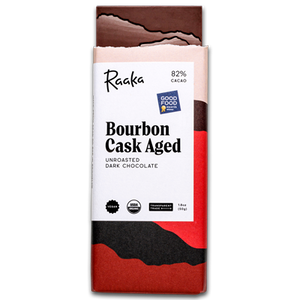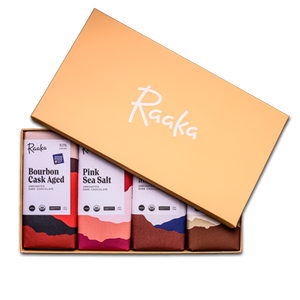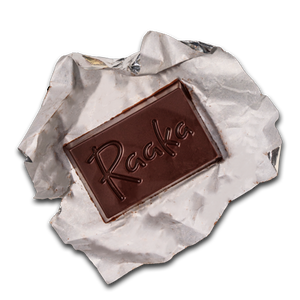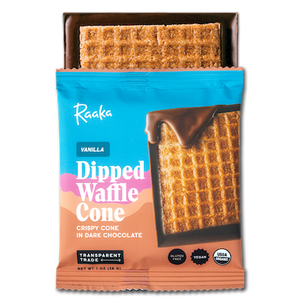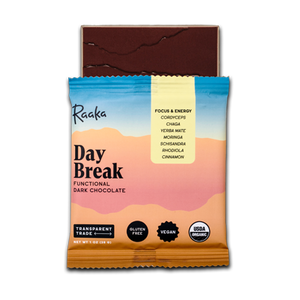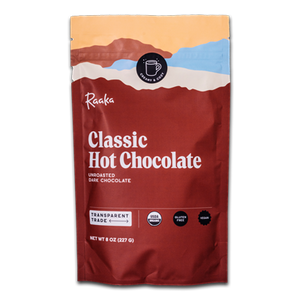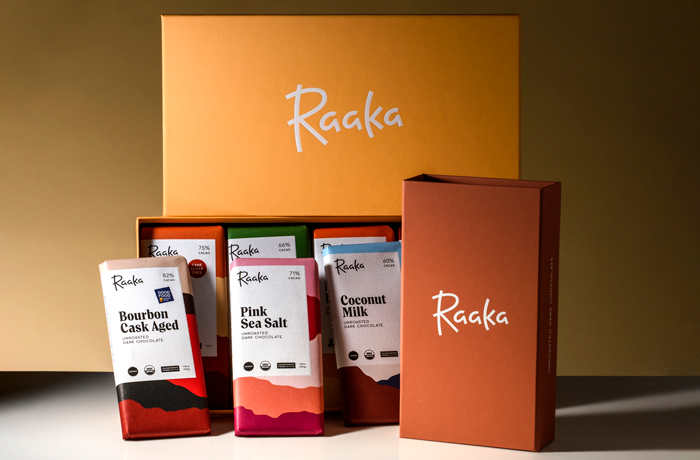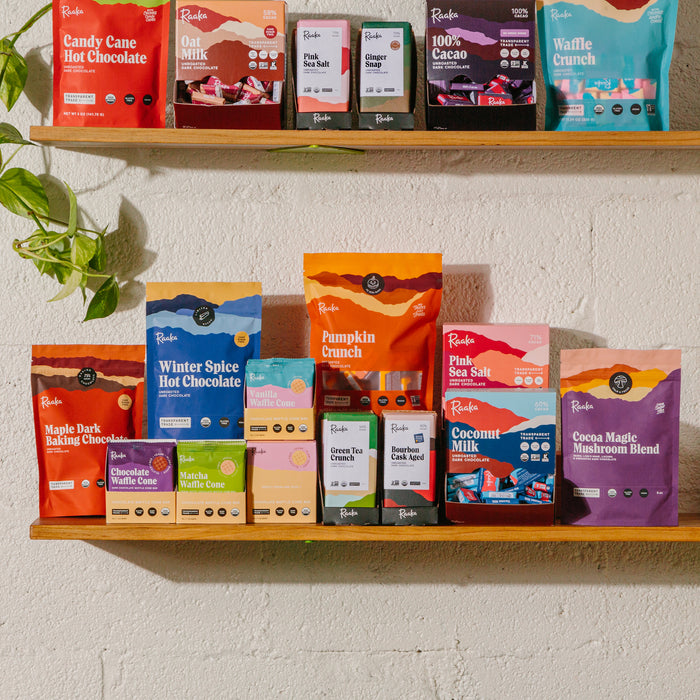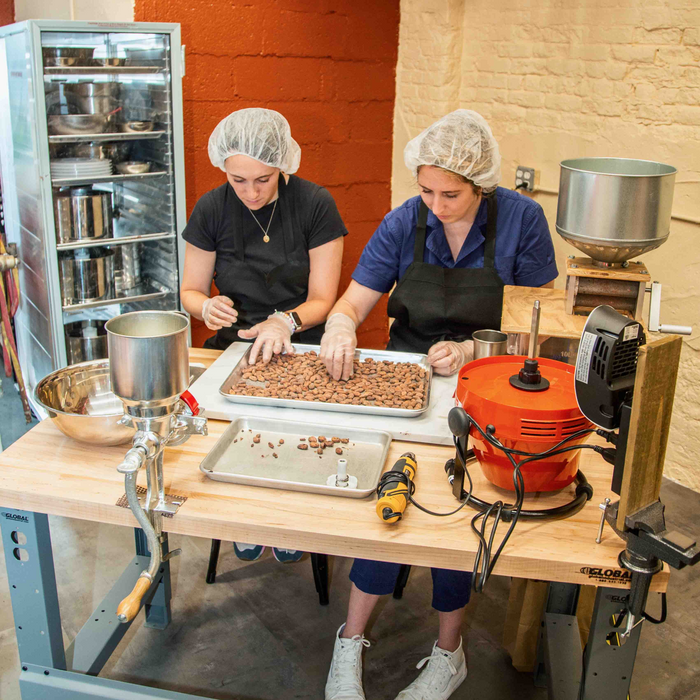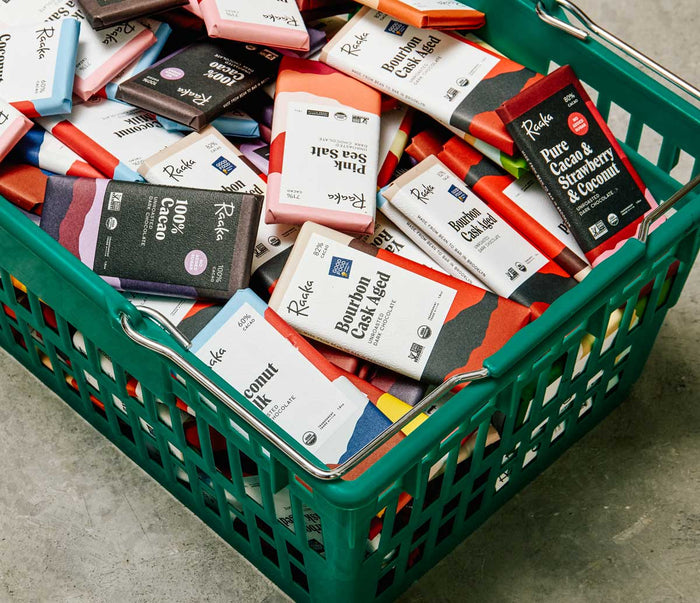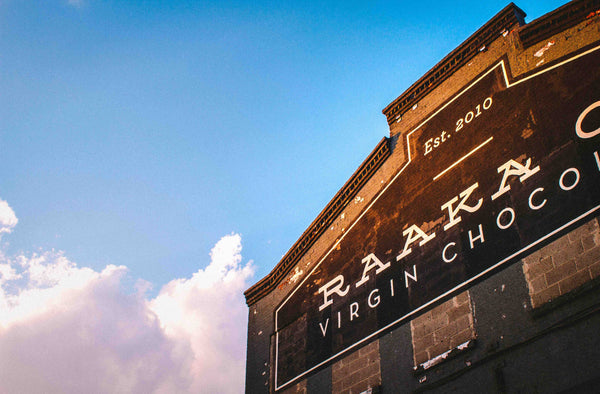Simpler Ingredients, Better Chocolate
simpler ingredients, better chocolate
Because we start with whole organic cocoa beans, Raaka uses fewer ingredients and less processing than just about every other chocolate company out there, for healthier and better-tasting chocolate. We're proud to make bars directly from beans by hand, showcasing the unique profiles of each region and growing season.
We'll take you on a tour of the ingredients in a Raaka bar and a typical premium organic chocolate bar, so you can visualize the difference. On the left, everything that goes into our single-origin 75% Dark Madagascar bar. It's 75% unroasted beans from Somia farm in the Sambirano Valley, and 25% organic evaporated cane juice. Two ingredients, so the Somia cacao's notes of golden plum, rice wine and pistachio can sparkle.
On the right, ingredients you might find in a typical organic premium chocolate bar. Cacao solids, made from a melange of roasted beans of all different ages and origins, are about 35% of the bar. (Imagine a wine produced by combining grapes at random!) Typically, it's sweetened with refined sugar, about 50% of the bar by weight. To meet the FDA's definition of chocolate, we need a bit of cacao butter1, wrung from unrelated beans. Due to the large-scale industrial processes involved, it's actually more efficient for producers to buy cacao separated into its solid and fatty components, and combine them in the desired proportions. Finally, this bar gets a drop of vanilla extract, and lecithin as an emulsifier, usually chemically extracted from soy beans.
Remember, this comparison bar is an organic, premium bar. Were this a mass-market bar, we'd need to add additional emulsifiers, like polyglycerol polyricinoleate, taste chemicals (like "natural" vanilla flavoring derived from beaver glands, or artificial flavors wholly synthesized in a lab), and more.
Single-origin spotlights
Reducing processing isn't the only reason we start with whole beans. Like with wine varietals, equatorial cacao growing regions around the world produce vastly different flavor profiles. There's lots of contributors:
- Tree species (the major types of cacao are known as Criollo, Forastero, and Trinitario)
- Soil composition and pH
- Climate
- Rainfall
- Sunshine
- Growing culture
You can actually taste the difference between Madagascar and Brazil—or even between beans grown on different farms on the same Caribbean island. But this wild landscape of flavor gets processed away by most chocolate manufacturers, who start with mechanically separated roasted cacao solids instead of raw beans.
Most of our bars feature a single origin, so that the unique flavor profiles of each region can shine.
Besides our simpler, healthier ingredients, our focus on simpler processes means our beans are never roasted. Since we do all the manufacturing ourselves in small batches, we can ensure that no soy, dairy, gluten or nuts ever come in contact with our stone grinders.
Discover the Raaka difference. Try our virgin chocolate today.
1. The largest industry trade group began lobbying the US FDA in 2007 to permit the substitution of vegetable oil for cacao butter. Currently, chocolate bars must contain some cacao fat to be considered chocolate.
